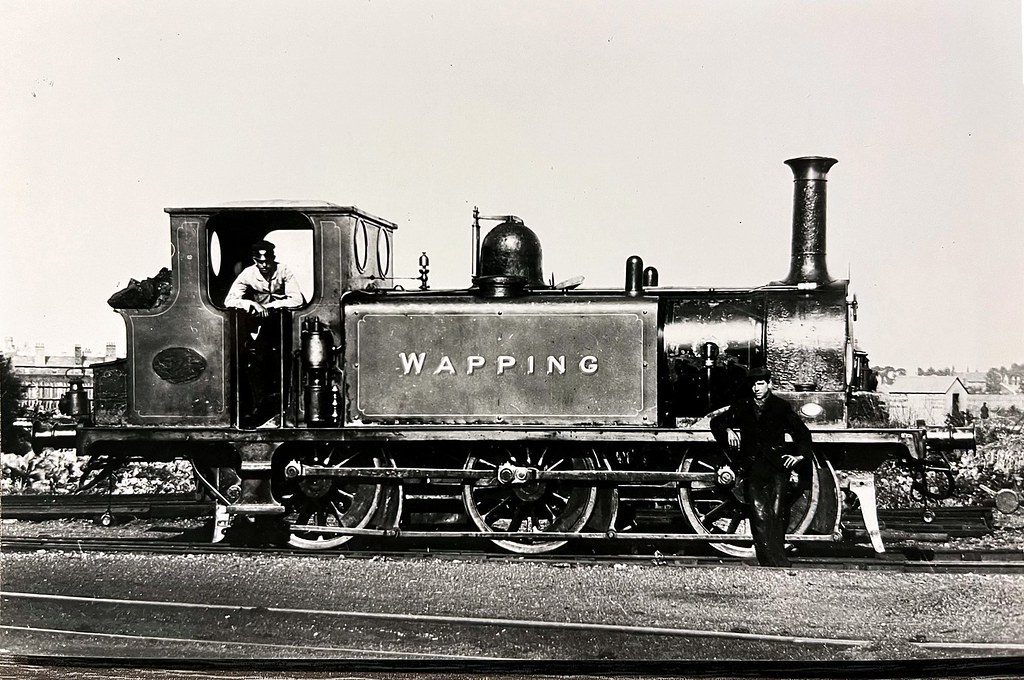#charles croydon
Text
Minster carvings recall ancient traditions of The Green Man
Good luck will rub off…: chimneysweeps, milkmaids or shepherdesses with floral baskets and ladels, clowns and Green Men would all feature in the ancient rites of spring
SUNDAY SUPPLEMENT: Has there been an outbreak of paganism in the pews of Croydon’s oldest church? Spring’s in the air as DAVID MORGAN investigates
Visitors to Croydon Minster are often amazed at the detail in the wooden carvings…

View On WordPress
#Charles Dickens#Croydon Minster#David Morgan#Edgar Browne#Hablot Browne#Jack in the Green#May Day#The Green Man
0 notes
Text
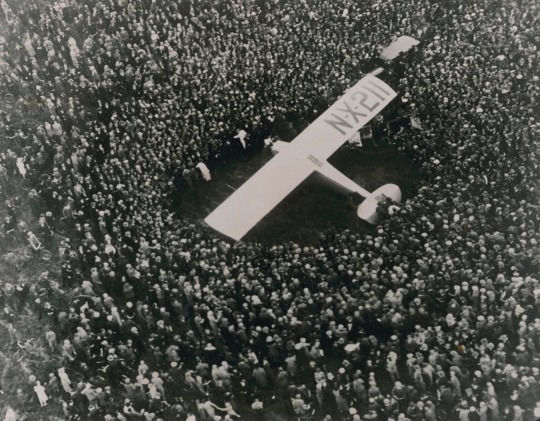
Charles Lindbergh arriving at Croydon Field
Surrey, England, June 1927
#history#vintage#photography#portrait#black and white photography#charles lindbergh#croydon field#surrey#england#twentieth century history#twentieth century#june#1920s#1927#plane
1 note
·
View note
Text
On the 10th Day of Thanktival…
Prompt: Project Crossover
Here are some characters across the Six Idiots universe played by the same actors who I like to think are related. These don’t all make sense but I’m having fun :)
Nigel the Plague Ghost - Ian - various peasants in Horrible Histories

Robin - Lope Lopez

The Earl of Croydon - Julian Fawcett MP

Gabriel Montoya - this Stuart man from Horrible Histories (Charles)

Bob Hale - Leslie John Leslie - Brother Anthony

#12 days of thanktival#thanktival#bbc ghosts#bill the film#bill the movie#bill 2015#horrible histories#yonderland#larry rickard#laurence rickard#simon farnaby#jim howick#don’t stab the messenger#crazy in the coconut#solar powered paperclips#do you want a glass of milk#moonah stona
96 notes
·
View notes
Text
a more detailed version of my era shift au:
the captain is a roman soldier. he's the oldest ghost around, and the rest of the ghosts know fuck all about him, including how he got the name captain, or why he's not wearing roman armour, or, you know, how he died...
pat is an anglo-saxon bard who went to the trouble of writing his own poems - but his wife's lover stole it from him, and he's spent the last thousand or so years angry at that rather than fact that he was murdered after getting caught up in a tavern brawl. priorities, man
fanny (originally stephanie, centuries later dubbed fanny by kitty) is a medieval noblewoman married off to (insert title here) george. her cause of death is a mystery lost to history - was it an accident? was it murder? was it a suicide? if they'd just look in a mirror, they would quite literally see the answer staring back at them and yelling at them to wear their hair up properly, disgraceful whores!
thomas thorne is a young nobleman of the 1490s, determined to prove his worth to the lady isabelle in a jousting tournament. too bad that francis clanged him over the head with some heavy metal object. he fell face-forwards and died. convinced that if he just practices enough, he might someday become good at jousting (this is not true)
julian is also a nobleman - a stuart under charles ii this time. it's a bit too early for the time period, but picture the earl of croydon in bill, and you've more or less got the vibe. not actually the owner of button house: he was caught sleeping with the real owner's wife, and beheaded in a fit of rage
mary is a servant from the 1850s. the east wing of button house burnt down after some idiot left a candle burning during the night by accident; nobody else died, because the rest of the household awoke in time to put the fire out, but mary choked on the smoke, and has been very bitter that no one managed to save her ever since
kitty is a stylish young woman of the 1930s. she was invited to a dinner party in the style of an agatha christie murder mystery... unfortunately, this took a far too literal turn when her sister actually did poison her. kitty is half annoyed at being murdered and half kind of vibing with the whole real life murder mystery vibe she has going on, and has been enthusiastically following the attempts to solve the kitty case (as she likes to put it)
humphrey is an ex-soldier and painter who died in the mid-1950s. he was unwillingly drafted into ww2, but managed to survive, go back home, and eventually escape to the countryside and rent out heather button's gatehouse, a welcome break from a post-war world which for a post-war mind was incredibly stressful. he painted and sold landscapes for several years. things were finally looking up! oh, and then he died of carbon monoxide poisoning. absolutely shit way to go after living through two world wars
and finally there's robin, an early 2000s conspiracy theorist who thought gravity wasn't real, tested his hypothesis by jumping out a window, and was very, fatally wrong. his nokia brick is still going strong though
39 notes
·
View notes
Text

We are very pleased to announce Modernism Beyond Metro-Land, our follow up to A Guide to Modernism in Metro-Land, an exploration of modernism in London’s eastern and southern suburbs, from Waltham Forest in the NE to Kingston in the SW
Modernism Beyond Metro-Land will include the architects such as Charles Holden, Berthold Lubetkin, Owen Luder, Richard Rogers and many others. The guide will feature art deco cinemas, modernist tube stations, brutalist office blocks, stunning post war houses and much more.
As with the first guide, Modernism Beyond Metro-Land will feature colour photographs, detailed descriptions and maps of each area, as well as extended sections exploring a specific group of buildings such as Redbridge’s Central Line stations and Croydon Town centre
Publication of the guide is being crowdfunded with Unbound, who also published A Guide to Modernism in Metro-Land. To support the new book and choose from various pledge rewards follow the link in our bio or visit the Unbound website
Publication of the guide is being crowdfunded with Unbound, who also published A Guide to Modernism in Metro-Land. To support the new book and choose from various pledge rewards follow this link https://unbound.com/books/modernism-beyond-metro-land/
15 notes
·
View notes
Photo

Stepping Stones Landscape
Henry Charles Heffer (1848–1931)
Museum of Croydon
59 notes
·
View notes
Text

Charles Lindbergh surrounded by over 150,000 onlookers in Croydon Aerodrome, England shortly after his famous transatlantic flight, 1927.
0 notes
Text
Without Prejudice Great Britain Is A Disgrace To Human Race For The Breaches Of Equality Act GDPR Rules Of Laws Legislations Codes Of Practices Conducts LEYF June O'Sullivan Advisor Ofsted Mayor Of London Mother Watch 2 White Children Beat A Black Girl In Public Police Visited My Home 2017-2023 To Section Murder Kidnap Me Croydon Magistrates Court Date Dad Died 1980 Time For Change When Mervelee Myers Arnold Ebenezer Tomlinson Go Down In British History King Charles Crown Send Tom 100th Birthday Card I Tell The World...
View On WordPress
0 notes
Text
As we say goodbye to 2022 and greet 2023, I’d like to reflect on what has been an unprecedented year in the history of our nation, world and indeed our Diocese
Sophia Jones, Director of Communications, writes...
As we say goodbye to 2022 and greet 2023, I’d like to reflect on what has been an unprecedented year in the history of our nation, world and indeed our Diocese. My prayer is that in all that has taken place this past year and for all that is to come, we continue to trust in our Lord and saviour Jesus Christ who comforts us and tells us to cast our burdens on him. After all, he assures us that his yoke is easy and his burden light.
On February 24, Russia invaded Ukraine. According to the UN 7.8 million Ukrainians have been displaced across Europe. Just four days after the invasion, Bishop Christopher called on the UK Government to lift significant visa restrictions for refugees fleeing Ukraine. Read full report here: Bishop of Southwark calls on UK Government to lift significant visa restrictions.

In response to the growing numbers of Ukrainian refugees seeking refuge in the U.K. and our Diocese, JPIC provided practical support and signposting to people in the diocese who wanted to help and sponsor a refugee family in their homes. Churches across the Diocese continue to provide support in many varied ways, from youth clubs to services in Ukrainian. Not all people seeking asylum were as welcome as the Ukrainians. We saw this in the Government’s Rwanda asylum policy. Bishop Christopher spoke out against it alongside other church leaders. Unfortunately, the High Court ruled in December that Britain’s plan to deport migrants to Rwanda is lawful.

We have seen changes in two of our Episcopal areas during 2022. Bishop Jonathan Clark, Bishop of Croydon, left in March and in May we announced the appointment of the Rt Revd Dr Rosemarie Mallett, then Archdeacon of Croydon, as the new Bishop of Croydon. The Revd Greg Prior has replaced her as Archdeacon of Croydon. Bishop Rosemarie was consecrated at Southwark Cathedral in June.

Bishop Richard Cheetham, Bishop of Kingston, retired in October and it was announced in December that the Revd Martin Gainsborough is Bishop of Kingston designate.


A highlight in the calendar for me was the Diocesan Conference held at Bacon’s College in early September. It brought together clergy and lay leaders from across the Diocese for three days of worship, listening to sterling keynote speakers addressing what it means to be Christ Centred and Outward focused. Above all it provided space and time for people to meet together again and catch up, laugh, pray and fellowship together.
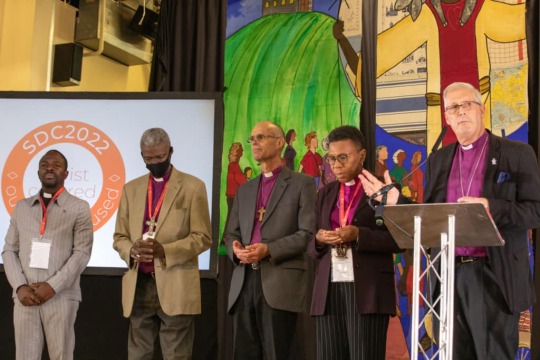
Her Late Majesty Queen Elizabeth died on 8 September. Like many Communications teams across the country we changed the website, sent out a press release, emailed information to the parishes and reported on the various services that were taking place, including the Proclamation of His Majesty King Charles III. None of us will forget The Queue which wound its way through parts of Diocese and passed Southwark Cathedral across to where Her Late Majesty lay in State in Westminster Hall. It is estimated that about 250,000 people waited in the Queue, and many clergy and laity from our Diocese ministered to those queuing.

Our Coronavirus Task Group was replaced by the Cost of Living Task Group in late 2022 in response to supporting parishes as they support their communities. The year has seen the growing need and dependence on food banks, warm spaces, free school meals, extra benefits because of the rise in the cost of living.
There is so much more that I could share. I have been blessed and privileged by the news and stories that people from across this large and diverse diocese have shared with myself and the Communications team so that we can share them more widely. This is my last blog post, as I will be leaving the Diocese at the end of January. God continue to guide and bless you all.

0 notes
Text
Croydon
Croydon is a large town located in south London, England. It is the seat of the London Borough of Croydon, and is one of the largest commercial areas in Greater London. The city is home to a wide range of shops, and a lively night economy. There are many museums and attractions in the city, as well as a large sports complex.
The town’s name is derived from the Old French word croie dune, meaning “chalk hill”. It is located on the northern edge of the chalk hills known as the North Downs. The area is a major centre for both the labour and temperance movements. In the early nineteenth century, Croydon was a thriving commercial district of London. Public houses were the sites of early labour meetings. However, Croydon also had a strong temperance movement. Georgina King Lewis, an early member of the Croydon United Temperance Council, set up a dry center for the labour movement in the town. Learn more.
The town is home to several political parties. The Conservative Party controls the council, with approximately 45% of seats being held by Conservatives. The Lib Dems hold just one seat in the town. Croydon Borough Council is divided into 24 wards, and all of the seats on the council were up for re-election in the 2006 local elections. The Conservatives took 10 seats from Labour and one from the Liberal Democrats. This makes the Conservatives the majority party in Croydon.
Croydon has several theatres, and many community arts groups. The town has a large, landscaped green space that is adjacent to the town hall and Clocktower art centre. It is also home to several small comedy venues and community arts groups. The Spread Eagle Theatre is a modern 50-seat studio theatre, which collaborates with the Old Joint Stock Theatre in Birmingham.
The city’s history dates back to the 18th century, when the town became an important stop for stage coaches. The town was also the endpoint of two early commercial transport links with London. The Surrey Iron Railway arrived in Croydon in 1803, and it was extended to Merstham in 1805. The Croydon, Merstham and Godstone Railway followed in 1809. The Croydon Canal branched off the Grand Surrey Canal at Deptford. Later, in 1839, the London and Croydon Railway began running between London Bridge and West Croydon.
The town is also home to several historic buildings. The Croydon Town Hall is the city’s third town hall, which was built in 1895. The town’s first town hall was built in 1566, and the second one was constructed in 1808 and demolished in 1895. The current town hall was designed by local architect Charles Henman and was officially opened by the Prince and Princess of Wales on 19 May 1896. The building is built of red brick from Wrotham in Kent, with green Westmorland slates used for the roof.
In the past, Croydon was a bustling market town. It was the gateway between Brighton and London, and was home to the Surrey Iron Railway. In 1809, it was followed by the Croydon Canal and then the London and Croydon Railway. In the early twentieth century, Croydon opened an aerodrome, which operated until 1959. Sadly, this historic site was badly damaged during World War II. The last scheduled flight to Croydon departed from Croydon on 30 September 1959.
A great place to also visit is:
Originally published here: https://forestray.dentist/london/croydon/
0 notes
Photo
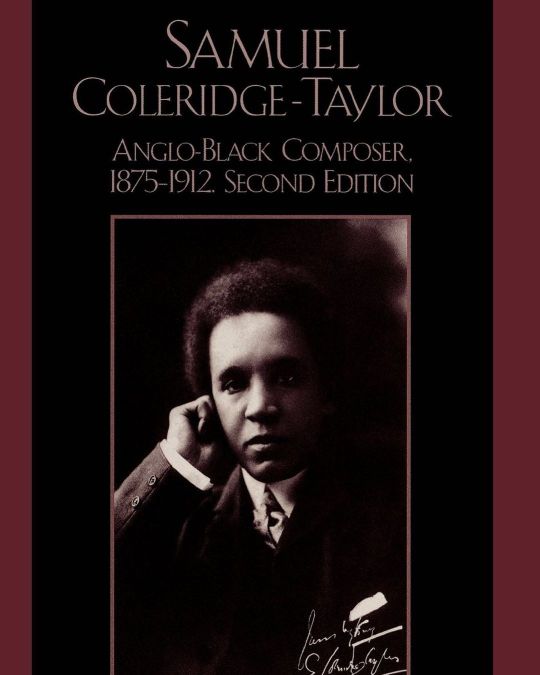
Samuel Coleridge-Taylor (August 15, 1875 – September 1, 1912) was an English composer and conductor. Of mixed race birth, he achieved such success that he was referred to by white New York musicians as the "African Mahler" when he had three tours of the US in the early 1900s. He was known for his three cantatas the epic poem Song of Hiawatha by Henry Wadsworth Longfellow. He premiered the first section in 1898 when he was 22. He was born in Holborn, London to Alice Hare Martin (1856–1953), an English woman, and Daniel Peter Hughes Taylor, a Krio man from Sierra Leone who had studied medicine in the capital. He became a prominent administrator in West Africa. They were not married, and Daniel Taylor returned to Africa without learning that Alice was pregnant. Alice Martin named her son after the poet Samuel Taylor Coleridge. He was brought up in Croydon. There were numerous musicians on his mother's side and her father played the violin. He started teaching it to him when he was young. His ability was obvious when young, and his grandfather paid for the boy to have violin lessons. The extended family arranged for him to study at the Royal College of Music, beginning at the age of 15. He changed from violin to composition, working under professor Charles Villiers Stanford. After completing his degree, he became a professional musician, soon being appointed a professor at the Crystal Palace School of Music; and conducting the orchestra at the Croydon Conservatoire. He used the name "Samuel Coleridge-Taylor", with a hyphen, said to be following a printer's typographical error. In 1894, his father Daniel Taylor was appointed coroner for the British Empire in the Province of Senegambia. #africanhistory365 #africanexcellence https://www.instagram.com/p/ChRxzBfO39T9y6bn-uxF5om7GWidBHr3fBiW7k0/?igshid=NGJjMDIxMWI=
0 notes
Text
The 550-year rise and fall of Croydon's annual Walnut Fair
Thousand of stalls, thousands of visitors: people travelled from London, Surrey and far and wide for Croydon’s annual Walnut Fair
SUNDAY SUPPLEMENT: The account of life in Croydon written by the son of Charles Dickens’ illustrator offers fascinating details into a long-forgotten annual festival on the ‘Fair Field’, as DAVID MORGAN explains
“Try your hand at the Lucky Bag!”
“Walk up! Walk up! The…
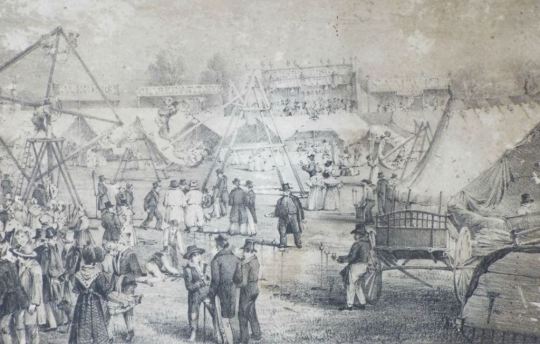
View On WordPress
#Charles Dickens#Croydon#Crystal Palace#David Morgan#Edgar Browne#Fair Field#Phiz#Queen Victoria#Walnut Fair
0 notes
Text
Book Corner – August 2020 (3)
Book Corner – August 2020 (3) - The 12.30 from Croydon by Freeman Wills Croft, classic Golden Age detective fiction from British Library Crime Classics
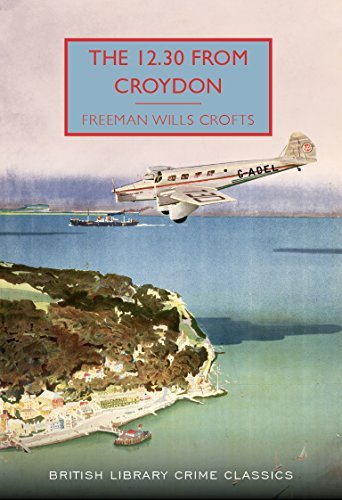

The 12.30 from Croydon – Freeman Wills Crofts
This superb reissue, part of the British Library Crime Classics series, was originally published in 1934, and a cracking story it is too. I hadn’t read any of the full-length books of Dublin-born writer, Crofts, before but this was a beautifully crafted story and a good place to start. Although Crofts was a railway engineer by training and his…
View On WordPress
#British Library Crime Classics#Charles Swinburn#Freeman Wills Croft#Inspector Joseph French#Richard Hull#The 12.30 from Croydon#The Murder of my Aunt
0 notes
Video
London, Brighton & South Coast Railway – ‘A1 Class’ 0-6-0T – No.71 ‘Wapping’ at Littlehampton c1900 by Peter Heelas
Via Flickr:
The London, Brighton and South Coast Railway (LB&SCR) A1 Class is an English class of 0-6-0T steam locomotive. Designed by William Stroudley, 50 members of the class were built in 1872 and between 1874 and 1880, all at Brighton Works. The class has received several nicknames, initially being known as "Rooters" by their south London crews. However, the engines were more famously known as "Terriers" on account of the distinctive 'bark' of the exhaust beat. Originally known as "A" class, these diminutive tank locomotives were designed in 1870 to haul commuter trains on the heavily congested lines in South and South-East London. These included routes from London Bridge to both East and West Croydon, London Victoria to Sutton and the line from Victoria to London Bridge via. Peckham Rye and Denmark Hill, as well as operating on the East London Railway under the Thames through the Thames Tunnel designed by Marc Isambard Brunel. Six locomotives were built for these services during 1872, and were successful due to their high acceleration between the closely spaced station stops and ability to haul reasonably heavy trains. A further 44 were thus built between June 1874 and September 1880 to complement the original six. The LSWR operated the branch from the beginning; the permanent way was very light and permissible axle loads limited, at 12 tons. The locomotives used at first were nos. 734 and 735, Terrier (A1) class 0-6-0T engines; they formerly belonged to the London Brighton & South Coast Railway (LBSCR) for suburban work. However they were not entirely successful due to their limited power. A1 (Terrier) Class 0-6-0T No. 71 ‘Wapping’, (671, K&ESR No.5) designed by William Stroudley, built in 1872 at Brighton Works. Hired for construction of the Sheppey Light Railway. Sold for £700 to Rother Valley Railway (Kent & East Sussex Railway) in January 1905 and became No.5 ‘Rolvenden’. Withdrawn in 1932, cannibalised in 1933 and scrapped in 1938. Photographer Unknown – taken from a Real Photographers photo copyright ‘David & Charles’ seen here at Littlehampton c1900.
4 notes
·
View notes
Photo

Henry Wallis - The Room in which Shakespeare Was Born - 1853
Height: 41.9 cm (16.4 in) Edit this at Wikidata; Width: 29.2 cm (11.4 in)
Henry Wallis RWS (21 February 1830 – 20 December 1916) was a British Pre-Raphaelite painter, writer and collector.
Wallis was born in London on 21 February 1830, but his father's name and occupation are unknown. When in 1845 his mother, Mary Anne Thomas, married Andrew Wallis, a prosperous London architect, Henry took his stepfather's surname. His artistic training was thorough and influential. He was admitted as a probationer to the RA and enrolled in the Painting School in March 1848. He also studied in Paris at Charles Gleyre's atelier and at the Academie des Beaux Arts, sometime between 1849 and 1853.
A painting by Wallis depicting Gerard Johnson carving Shakespeare's funerary monument. Ben Jonson shows Shakespeare's death mask to the sculptor.
Wallis is best remembered for his first great success, The Death of Chatterton, which he exhibited at the Royal Academy in 1856. The painting depicted the impoverished late 18th-century poet Thomas Chatterton, who poisoned himself in despair at the age of seventeen, and was considered a Romantic hero for many young and struggling artists in Wallis's day. His method and style in Chatterton reveal the importance of his connection to the Pre-Raphaelite movement, seen in the vibrant colours and careful build-up of symbolic detail. He used a bold colour scheme with a contrasting palette and he exploited the fall of the natural light through the window of the garret to implement his much loved style at the time, chiaroscuro. The size of Chatterton's garret was only fractionally larger than the scope of the painting, with room for Wallis and his easel and little else during the preliminary sketches, which were done on-site. The painting is 25x37" and is in the Tate Britain, with other versions in the Birmingham Museum and Art Gallery and the Yale Center for British Art. There may have been more examples of Chatterton as it was popular and when Wallis had to pay the rent he would paint another version. He once said that dead poets are more saleable than dead labourers (referring to The Stonebreaker) His next major work, The Stonebreaker (1857, exhibited in 1858), consolidated his reputation as a true Pre-Raphaelite. In total, he showed 35 exhibits at the RA, but later in life developed a greater interest in watercolour painting. He was elected a full member of the RWS (Royal Watercolour Society) in 1878 and exhibited over 80 watercolours at the society.
The model for his acclaimed The Death of Chatterton was the young George Meredith, whose first wife Mary Ellen would later run off with Wallis.
Wallis' method of painting, especially in the early years of his career, and in particular on "Death of Chatterton", was to do the initial sketch, saturate it in water, use a grey tint to block in the shade, put on the colour and allow it to dry. When firm, he would use a hair pencil to add in the details, for which he is so renowned. For the light, he would touch the area in question with water and then rub it with a piece of bread. His studio during these years was in Chelsea, a very bohemian and out of the way part of London at the time.
He died, almost blind, at 1 Walpole Road, Croydon, on 20 December 1916.
40 notes
·
View notes
Text
Without Prejudice Great Britain Is A Disgrace To Human Race For The Breaches Of Equality Act GDPR Rules Of Laws Legislations Codes Of Practices Conducts LEYF June O'Sullivan Advisor Ofsted Mayor Of London Mother Watch 2 White Children Beat A Black Girl In Public Police Visited My Home 2017-2023 To Section Murder Kidnap Me Croydon Magistrates Court Date Dad Died 1980 Time For Change When Mervelee Myers Arnold Ebenezer Tomlinson Go Down In British History King Charles Crown Send Tom 100th Birthday Card I Tell The World...
https://youtube.com/live/Vb79OhjrK0c

View On WordPress
0 notes
